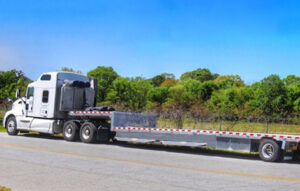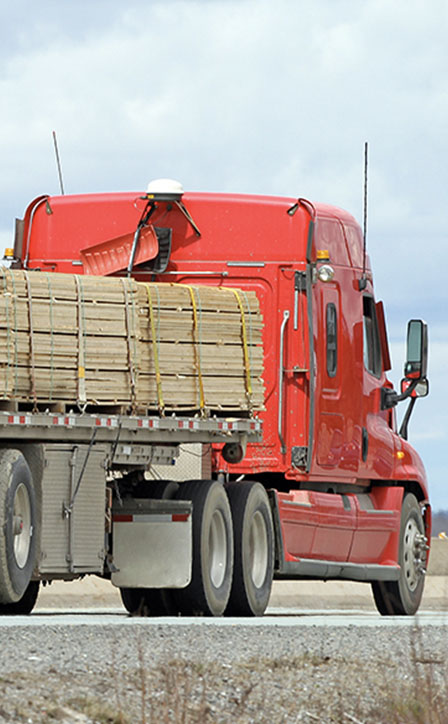FOCUS WEST LOGISTICS
YOUR ONE STOP LOGISTIC SHOP
We’ll get back to you within 30 minutes
In the world of FTL freight, understanding the different types the ins and outs of FTL shipping, freight classification, its benefits, downsides, comparisons to the LTL freight shipping can help you make informed decisions for your business and save you money on your shipping costs.
Let’s start with…
FTL (full truckload) and LTL (less-than-truckload) shipping are two common methods in the freight shipping industry, each catering to different types of freight.
FTL freight is typically used for larger shipments that require the entire capacity of a full truck alone, offering faster transit times, greater security, and more control over scheduling. On the other hand, LTL shipping is designed for smaller shipments that don’t fill the full capacity of an entire truck, sharing the same truck and space with multiple businesses goods. This method is generally more cost-effective for smaller loads but might result in longer transit times and less security due to multiple stops and handling.
FTL shipping rates are influenced by various factors, including distance, fuel costs, ship type and freight class, of goods being shipped, and current market demand. To find the most competitive rates, it’s essential to compare quotes from multiple FTL shipping companies.
FTL freight shipping involves utilizing the entire space of a truck for a single shipment. This increased capacity allows for the efficient transportation of large volumes of goods, reducing the overall cost per unit shipped. If you are looking to ship only a few pallets, you might want to consider LTL shipping—full truckload ftl is good if you have an entire truck.
Since FTL shipments typically involve a single destination, they tend to have shorter transit times compared to LTL (less-than-truckload) freight, which often make multiple stops. This is the biggest difference between LTL and FTL.
With fewer hands handling your cargo and a single destination, FTL shipments have a lower risk of damage or theft compared to LTL shipments.
FTL shipping provides more flexibility in scheduling pick-up and delivery times, as the entire truck is dedicated to your shipment. You can control the pick up times and other factors since you have say over the entire trailer.
In the context of FTL shipping, a full truckload refers to the transportation of goods using the entire capacity of a truck. This shipping method is specifically designed for big shipments with enough freight to fill or nearly fill the entire truck. Unlike LTL (less-than-truckload), where multiple smaller shipments are consolidated onto a single truck, full truckload ftl dedicates the entire truck to a single shipment, providing benefits such as faster transit times, increased security, and more control over scheduling. This type of shipping is ideal for businesses with high-volume shipments or those that require special handling and expedited delivery, full truckload shipping is also useful for Cross Canada Shipping.
The type of truck used for FTL (full truckload) shipping depends on the specific requirements of the shipment, such as the size, weight, and type of goods being transported. There are various types of trucks used in FTL shipping, some of which include:
 Dry Van
Dry VanA dry van is a standard 53 foot enclosed trailer, typically used for moving non-perishable goods, furniture, electronics, and other general cargo. It offers protection from weather, dirt, and theft.
 Refrigerated Truck (Reefer)
Refrigerated Truck (Reefer)Refrigerated trucks, or reefers, are temperature-controlled trailers designed to transport perishable goods, such as food, pharmaceuticals, and other temperature-sensitive items.
 Flatbed Truck
Flatbed TruckFlatbed trucks have an open, flat platform without sides or a roof, making them suitable for shipping oversized, bulky, or oddly-shaped cargo that may not fit in an enclosed trailer.
 Curtain Side Truck
Curtain Side TruckA curtain side truck is a combination of a dry van and a flatbed trailer, offering the protection of a dry van and the convenience of a flat deck.
 Step Deck Truck
Step Deck TruckSimilar to a flatbed truck, a step deck truck has a lowered main deck to accommodate taller cargo, allowing for the transportation of items with height restrictions. Useful for Hot Shot Deliveries.
 Lowboy Trailer
Lowboy TrailerLowboy trailers are specialized flatbed trailers with a lower deck, designed for transporting heavy equipment, machinery, and oversized loads that exceed standard height limitations. Lowboy Trailers are often used in Hot Shot Shipping.
 Tanker Truck
Tanker TruckTanker trucks are used for transporting liquids, gases, or bulk materials, such as chemicals, fuel, or agricultural products.
The choice of truck depends on various factors, including the nature of the goods being transported, their size and weight, and any special handling requirements. It’s essential to choose the appropriate truck for your shipment to ensure safe and efficient transportation.
FTL stands for “full truckload” in shipping, referring to the transportation of goods using the entire capacity of a full truck (53 foot truck and trailer).
FTL shipping is the process of transporting goods using a dedicated truck, offering benefits such as higher efficiency, faster transit times, greater security, and more control over scheduling compared to LTL (less-than-truckload) shipping.
FTL stands for “full truckload,” a type of shipping method that uses the entire capacity of a full truck for a single shipment.
FTL, or full truckload, is a shipping method where a truck is dedicated to transporting a single shipment, filling or nearly filling the entire truck’s capacity. FTL shipping is ideal for large shipments or when additional security or faster transit times are required.
Understanding the intricacies of FTL transport is crucial for any small businesses looking to make informed decisions regarding their high risk shipping needs. By weighing the benefits and downsides of FTL and LTL, you can choose the best option for your specific needs. Don’t forget to compare FTL rates from multiple providers to ensure you get the lower cost option for your shipment.

TESTIMONIALS
He gets back to us immediately
We started using John @ Focus West Logistics for LTL freight and he has proven over and over again that he wants to earn our business. When we ask for a quote he gets back to us immediately with an option and will always follow up if he is able to find a better deal, when it comes time for the freight to be picked up he follows up and ensures everything is done and taken care of. I would recommend John and his team at Focus West Logistics
Ed Hudson — VANCOUVER, BC

TESTIMONIALS
Trusted Globally
Since our company switched to Focus West we have found booking/quotes and the whole shipping process to be that much easier. So happy to have spent the past year with them and hoping for many more to come. The staff are very professional and are great to deal with. Always going above and beyond for our shipping needs.
Bethany H — HANGZHOU, CHINA.

TESTIMONIALS
It makes my job so much easier.
Great job! Thank you for handling our materials delivery in such an efficient and timely manner and helping to make sure that all border crossings went smoothly. With Focus, we are always confident in our shipments arriving on time and in perfect condition. It makes my job so much easier.
Wess Cucamonga — BRADY, MONTANA

TESTIMONIALS
Willing To Go The Extra Mile
Focus West Logistics is such a pleasure to work with. The staff is fun, friendly and always willing to go the extra mile to make sure we are receiving the care and RATES we deserve.
Timothy Ribbecs — SEATTLE, WA
OUR PERFORMANCE
The Proof Is In Our Performance
COMPANY
Focus West Logistics is a Freight Forwarder providing competitive rates on Canadian Freight Shipping, International Shipping and many other freight logistics services.